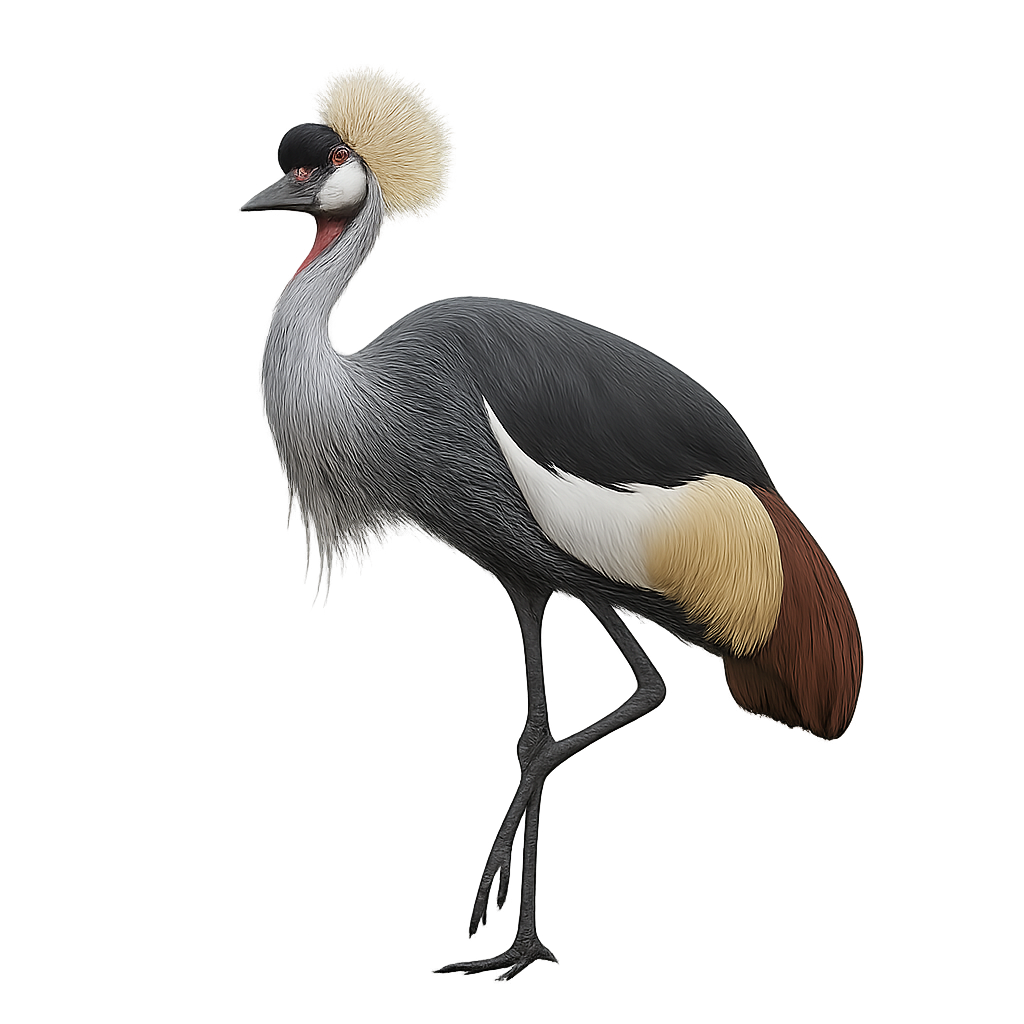Observe and photograph a species in its natural habitat
Learn where and when to observe a species in the wild, how to recognize it in the field, and what habitats it lives in. Get photography tips adapted to its behavior and capture stunning images without disturbing the animal. For full details, open the complete profile in the WildlifePhotographer app.
Crowned crane
Scientific name: Balearica regulorum

IUCN Status: Least Concern
Family: GRUIDAE
Group: Birds
Shyness: Shy
Safe distance: 30 m
Breeding season / Courtship: 01.10-31.12
Gestation: N/A
Births: 01.01-31.05
Habitat:
Wetlands, marshes, savannas, and grasslands of Africa, especially in sub-Saharan regions and coastal areas of Eastern and Southern Africa
Description:
The Crowned Crane is a large crane species, easily recognizable by its majestic golden plume crown on its head. It stands about 1 meter tall, with a wingspan of 1.8 to 2.2 meters, and weighs between 3 and 5 kg. Its plumage is mainly light gray, with white feathers on its belly and wings, and a head adorned with a golden crest, giving it a royal appearance. This species is primarily found in East Africa, notably in Uganda, Kenya, and Tanzania, where it inhabits wetlands, marshes, and grasslands. The Crowned Crane primarily feeds on seeds, roots, insects, and occasionally small vertebrates. It is a social bird, living in groups and often performing spectacular courtship displays, during which it engages in dances and calls. Although the Crowned Crane is considered "vulnerable," conservation efforts have been implemented to protect the species, as it faces threats from habitat loss, hunting, and human disturbance.
Recommended lens:
>=300 mm
Photography tips:
Use a telephoto lens to photograph the crowned crane, especially when it’s moving or feeding in meadows or marshes.
Soft morning or evening light is ideal to capture its vivid colors and graceful behavior.
Be discreet and respect its space, especially during the breeding season, to avoid disturbing its natural behavior.
IUCN status: Near Threatened. Respect its environment and minimize disturbance, especially during the breeding season.
Ready to take action?
Choose your platform and start your free trial today



